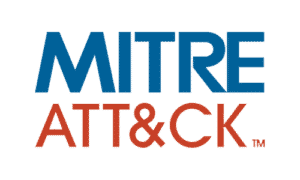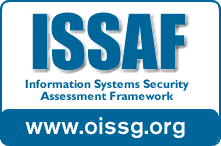Penetration tests can deliver widely different results depending on which standards and methodologies they leverage. Updated penetration testing standards and methodologies provide a viable option for companies who need to secure their systems and fix their cybersecurity vulnerabilities.
Here are 5 penetration testing methodologies and standards that will guarantee a return on your investment:
1. OSSTMM
The OSSTMM framework, one of the most recognized standards in the industry, provides a scientific methodology for network penetration testing and vulnerability assessment. This framework contains a comprehensive guide for testers to identify security vulnerabilities within a network (and its components) from various potential angles of attack. This methodology relies on the tester’s in-depth knowledge and experience, as well as human intelligence to interpret the identified vulnerabilities and their potential impact within the network.
 Unlike the majority of security manuals, this framework was also created to support network development teams. A majority of developers and IT teams base their firewalls and networks on this manual and the guidelines it provides. While this manual does not advocate for a particular network protocol or software, it highlights the best practices and the steps that should be taken to ensure the security of your networks.
Unlike the majority of security manuals, this framework was also created to support network development teams. A majority of developers and IT teams base their firewalls and networks on this manual and the guidelines it provides. While this manual does not advocate for a particular network protocol or software, it highlights the best practices and the steps that should be taken to ensure the security of your networks.
As technological landscapes have become more complex with advancements like cloud computing, virtualization, and various infrastructure types, traditional simplistic tests for desktops or servers are no longer sufficient. OSSTMM version 3 addresses this complexity by encompassing tests across all channels, including Human, Physical, Wireless, Telecommunications, and Data Networks. This comprehensive scope makes it suitable for a wide array of environments, from cloud computing infrastructures to high-security locations.
The OSSTMM methodology (Open Source Security Testing Methodology Manual) allows testers to customize their assessment to fit the specific needs or the technological context of your company. With this set of standards, you will obtain an accurate overview of your network’s cybersecurity, as well as reliable solutions adapted to your technological context to help your stakeholders make the right decisions to secure your networks.
2. OWASP
For all matters of application security, the Open Web Application Security Project (OWASP) is the most recognized standard in the industry. This methodology, powered by a very well-versed community that stays on top of the latest technologies, has helped countless organizations to curb application vulnerabilities.
This framework provides a set of methodologies used for web application penetration testing, mobile application penetration testing, API penetration testing, and even IoT penetration testing. Using the OWASP as a testing methodology can not only help identify vulnerabilities commonly found within modern applications, but also complicated logic flaws that stem from unsafe development practices. The frequently updated guide provides comprehensive guidelines for each penetration testing method, including a series of steps and assessments to perform, allowing testers to identify vulnerabilities within a wide variety of functionalities found in modern applications today.
With the help of the OWASP methodology, organizations are better equipped to secure their applications – web and mobile alike – from common mistakes that can have a potentially critical impact on their business. Organizations looking to develop new web and mobile applications should also consider incorporating these standards during their development phase to avoid introducing common security flaws.
OWASP Top 10: The OWASP Web Top 10 serves as the go-to guide for web application security. This list encapsulates the most critical web application security risks such as Injection Flaws, Broken Authentication, Sensitive Data Exposure, and Cross-Site Scripting (XSS).
OWASP Mobile Top 10: The OWASP Mobile Top 10 addresses the unique challenges in mobile application security, ensuring robust defense mechanisms against mobile-specific vulnerabilities.. It covers risks like Insecure Data Storage, Insecure Communication, and Insecure Authentication.
OWASP API Top 10: The OWASP API Top 10 targets the security of Application Programming Interfaces (APIs), crucial for modern software communication. It highlights risks such as Broken Object Level Authorization, Excessive Data Exposure, and Injection.
OWASP IoT Top 10: The OWASP IoT Top 10 is tailored to the Internet of Things (IoT) devices, concentrating on vulnerabilities like Weak, Guessable, or Hardcoded Passwords, Insecure Ecosystem Interfaces, and Lack of Secure Update Mechanism.
OWASP LLM App Top 10: Securing Large Language Models The OWASP LLM App Top 10, a recent addition, focuses on security concerns specific to Large Language Models (LLMs) applications. It encompasses risks such as Data Poisoning, Inference Attacks, and Bias and Fairness issues.
3. MITRE ATT&CK
The MITRE ATT&CK framework has become a cornerstone in understanding modern security threats, allowing security professionals to replicate attacker techniques. This framework assists organizations in identifying vulnerabilities and developing tailored counter-measures:
- ATT&CK for Enterprise: covers adversarial behavior in Windows, Mac, Linux, and cloud environments.
- ATT&CK for Mobile: focuses on Android and iOS systems.
- ATT&CK for ICS: targets industrial control systems (ICS), detailing potential adversarial actions.
The MITRE ATT&CK framework has become a cornerstone in understanding modern security threats, allowing security professionals to replicate attacker techniques. This framework assists organizations in identifying vulnerabilities and developing tailored counter-measures.
External Penetration Testing
Case Study
See our industry-leading services in action and discover how they can help secure your external network perimeter from modern cyber threats and exploits.
Penetration Testing Guide
(2024 Edition)
Everything you need to know to scope, plan and execute successful pentest projects aligned with your risk management strategies and business objectives.
Web Application Penetration Testing
Case Study
See our industry-leading services in action and discover how they can help secure your mission-critical Web Apps / APIs from modern cyber threats and exploits.
Internal Penetration Testing
Case Study
See our industry-leading services in action and discover how they can help secure your internal network infrastructure from modern cyber threats and unauthorized access.
4. NIST
The NIST 800-115 testing methodology, developed by The National Institute of Standards and Technology (NIST), is an essential resource for organizations aiming to bolster their information security. This comprehensive guide distinguishes itself by offering a structured and repeatable framework for conducting thorough security assessments. It ensures consistency and effectiveness in testing, a critical factor in the ever-evolving landscape of cybersecurity.
Key aspects of the NIST 800-115 methodology include:
- Structured Approach: It emphasizes a methodical process in security assessment, covering planning, execution, and post-execution analysis. This structure helps organizations systematically address potential security vulnerabilities.

- Diverse Testing Methods: The methodology incorporates various testing and examination methods, such as technical testing, examination, and interviewing. This multifaceted approach enables a more thorough evaluation of security controls.
- Risk Identification and Mitigation: A primary goal of NIST 800-115 is to help organizations identify technical vulnerabilities, validate them, and develop strategies to mitigate associated risks, leading to a strengthened security posture.
Other NIST frameworks are often used alongside the NIST 800-115 standard to help implement robust defense against a wide array of cyber threats, such as:
- NIST Cybersecurity Framework (CSF): This framework complements the 800-115 by offering a broader perspective on managing cybersecurity risks, especially in critical infrastructure sectors.
- NIST 800-53 (Security and Privacy Controls for Federal Information Systems and Organizations): This standard provides a comprehensive set of security controls that can be used to bolster system security, ensuring robust preventive measures are in place.
- NIST 800-171 (Protecting Controlled Unclassified Information in Nonfederal Systems and Organizations): This standard helps non-federal entities protect sensitive information and ensure secure handling of data.
5. PTES
The PTES Framework (Penetration Testing Methodologies and Standards) highlights the most recommended approach to structure a penetration test. This standard guides testers on various steps of a penetration test including initial communication, gathering information, as well as the threat modeling phases.
Following this penetration testing standard, testers acquaint themselves with the organization and their technological context as much as possible before they focus on exploiting the potentially vulnerable areas, allowing them to identify the most advanced scenarios of attacks that could be attempted. The testers are also provided with guidelines to perform post-exploitation testing if necessary, allowing them to validate that the previously identified vulnerabilities have been successfully fixed. The seven phases provided in this standard guarantee a successful penetration test offering practical recommendations that your management team can rely on to make their decisions.
6. ISSAF
The ISSAF standard (Information System Security Assessment Framework) contains an even more structured and specialized approach to penetration testing than the previous standard. If your organization’s unique situation requires an advanced methodology entirely personalized to its context, then this manual should prove useful for the specialists in charge of your penetration test.
These sets of standards enable a tester to meticulously plan and document every step of the penetration testing procedure, from planning and assessment to reporting and destroying artifacts. This standard caters for all steps of the process. Pentesters who use a combination of different tools find ISSAF especially crucial as they can tie each step to a particular tool.
The assessment section, which is more detailed, governs a considerable part of the procedure. For each vulnerable area of your system, ISSAF offers some complementary information, various vectors of attack, as well as possible results when a vulnerability is exploited. In some instances, testers may also find information on tools that real attackers commonly use to target these areas. All this information proves worthwhile to plan and carry out particularly advanced attack scenarios, which guarantees a great return on investment for a company looking to secure their systems from cyberattacks.
In conclusion
As threats and hacking technologies continue to evolve in various industries, companies need to improve their cybersecurity testing approach to ensure that they stay up to date with the latest technologies and potential attack scenarios. Installing and implementing up-to-date cybersecurity frameworks is one step in that direction. These penetration testing standards and methodologies provide an excellent benchmark to assess your cybersecurity and offer recommendations adapted to your specific context so you can be well protected from hackers.
Got any questions regarding these penetration testing methodologies and standards? Want to learn more about what penetration testing can do for your organization? Get in touch with a certified specialist to determine how penetration tests can contribute to your overall cybersecurity.










